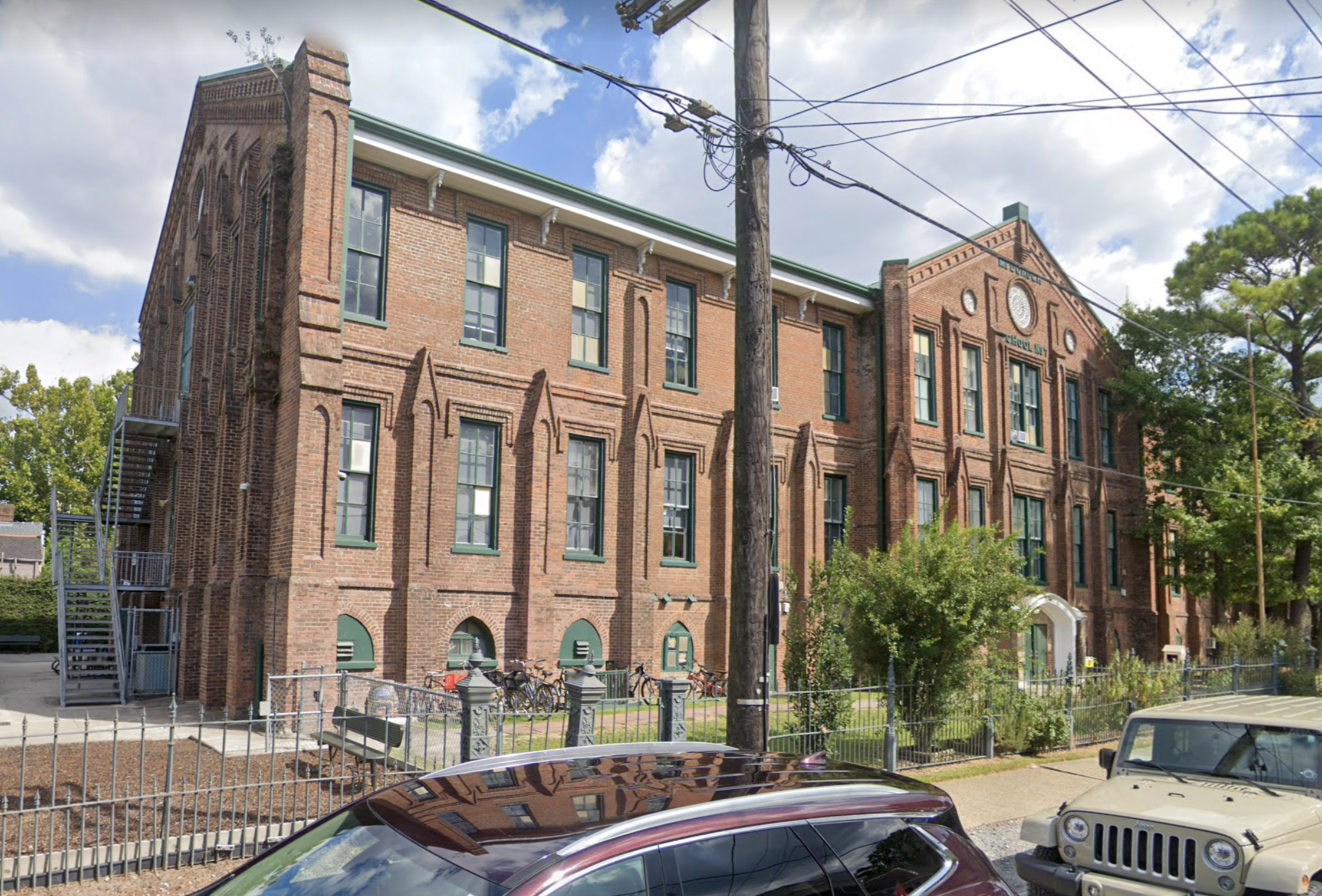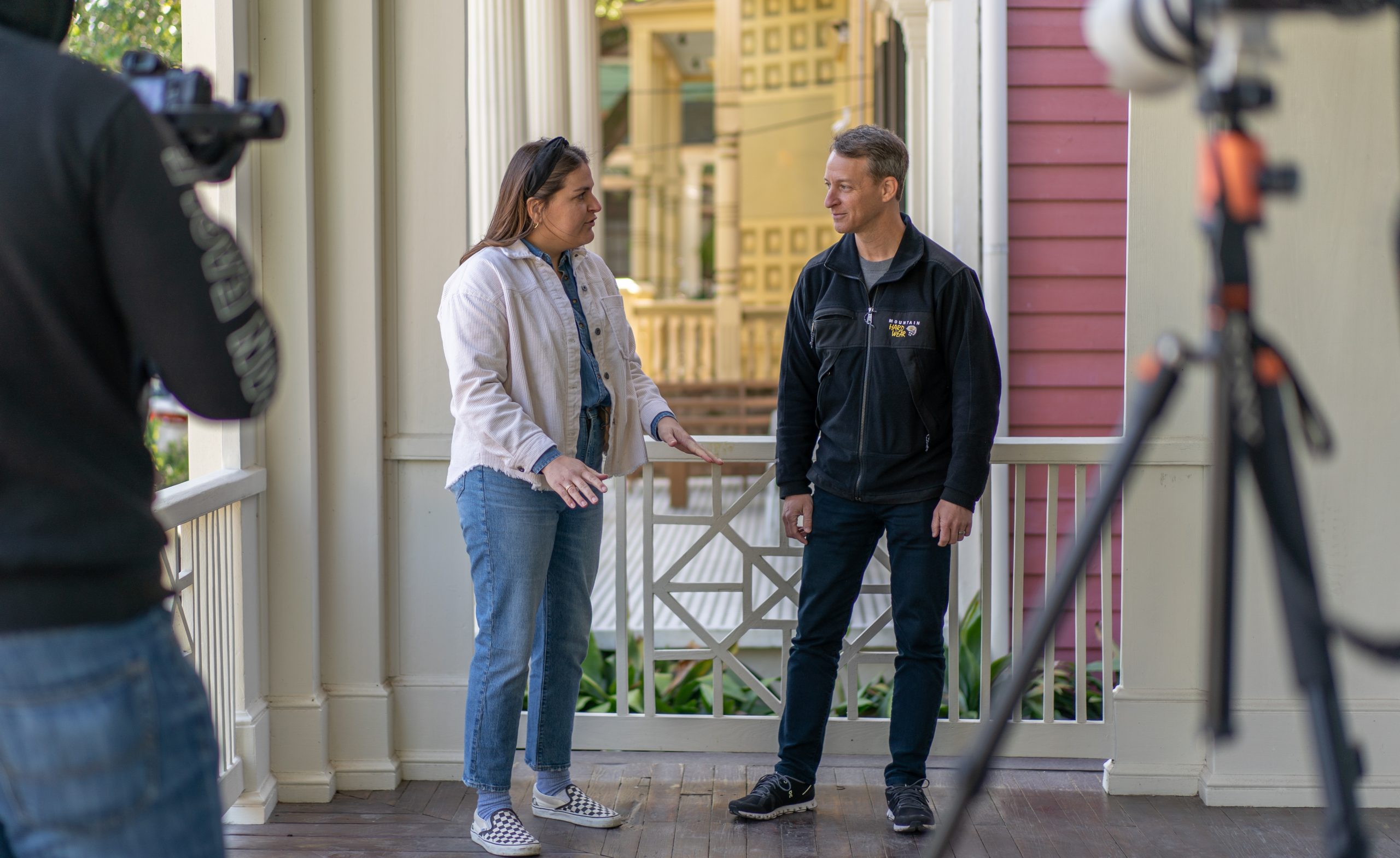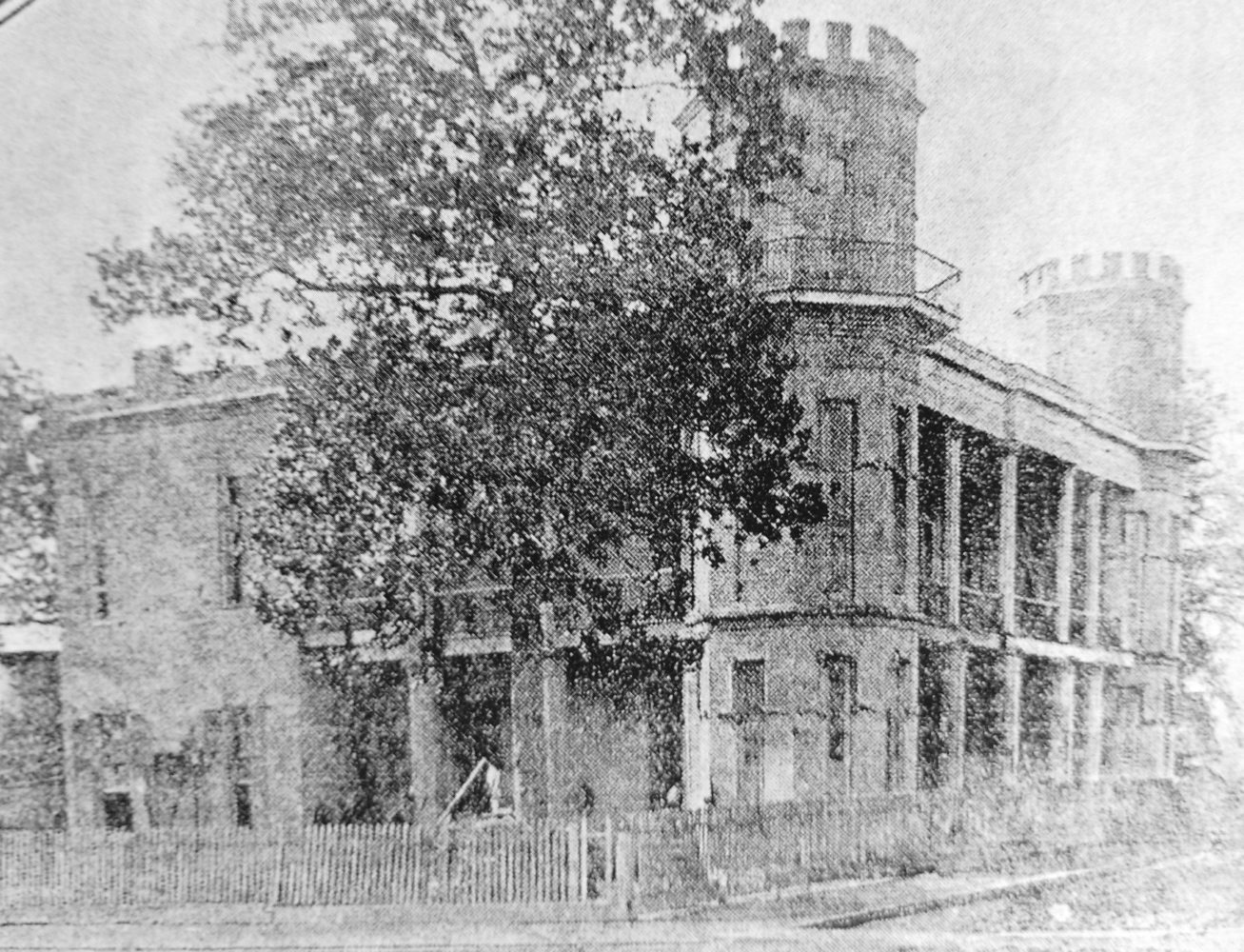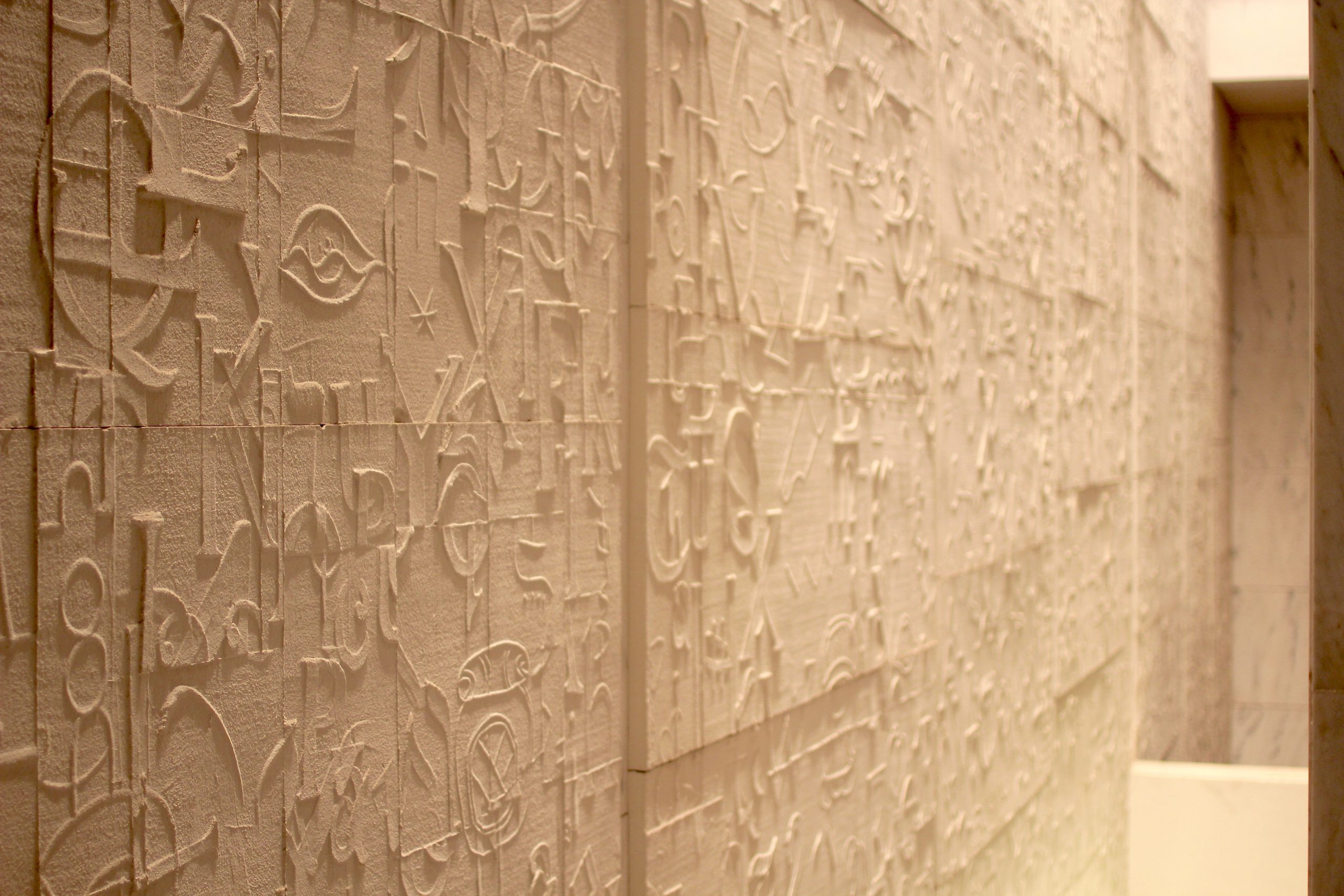This news brief appeared in the December issue of PRC’s Preservation in Print magazine. Interested in getting more preservation stories like this delivered to your door nine times a year? Become a member of the PRC for a subscription!
Plans to close a historic school in Uptown New Orleans and redevelop the property into affordable housing sparked intense discussion at an October meeting of the City Planning Commission. The debate ended without a majority vote that effectively punted the matter back into the lap of the New Orleans City Council, which now must decide whether to grant a planned development status.
Six generations of schoolchildren learned reading, writing and arithmetic at McDonogh No. 7 on Milan Street, some leaving their names, initials and graduation years carved into the soft red brick on the riverside facade. Designed by William Freret in 1877, the Gothic Revival schoolhouse closely resembled its predecessor, McDonogh No. 6, which, slightly modified, is now part of St. George’s Episcopal School.
Audubon Charter School will continue to use the McDonogh No. 7 building into 2022. However, that did not stop the Orleans Parish School Board from agreeing in 2019 to a land swap with the Housing Authority of New Orleans involving McDonogh No. 7 and an undeveloped portion of the former B.W. Cooper Housing Development. NOLA Public Schools intends to build a sports field for adjacent Booker T. Washington High School on the undeveloped site.
A Neighborhood Participation Plan meeting held in July was the first opportunity for residents of the Touro-Bouligny neighborhood to learn what HANO had planned for the historic school. Architects retained by the agency presented a conceptual design for senior housing in the historic school and new construction of two-family homes on lots currently used for parking and play space. Several participants called for the preservation of the Freret-designed building and sensitive development on the adjacent land.
In a subsequent appearance before the Planning Commission, HANO representatives stated their intent to contract with a development partner that will utilize historic rehabilitation tax credits. This announcement followed comments from the Preservation Resource Center on the double benefit of using these tax credits on the project. The credits will stretch limited housing dollars by recouping 40 percent of renovation costs while providing assurance that work will comply with the Secretary of Interior’s Standards for Rehabilitation, which is required by the Historic Preservation Tax Incentives program.
The City Council is expected to decide as early as December whether to grant HANO’s request for a planned development and may opt to place conditions (or provisos) on the project. A planned development is a zoning tool that affords developers greater flexibility when executing an adaptive reuse or affordable housing project. It would allow for residential use and enable HANO to use funds from the U.S. Department of Housing and Urban Development.
Nathan Lott is PRC’s Policy Research Director and Advocacy Coordinator.







